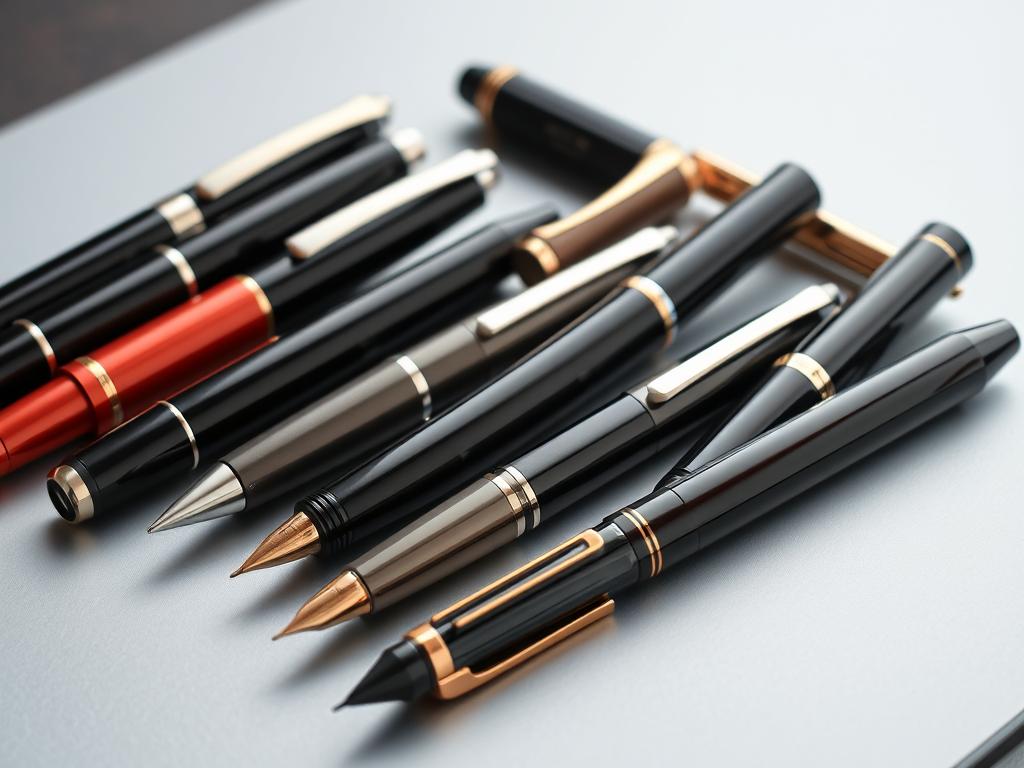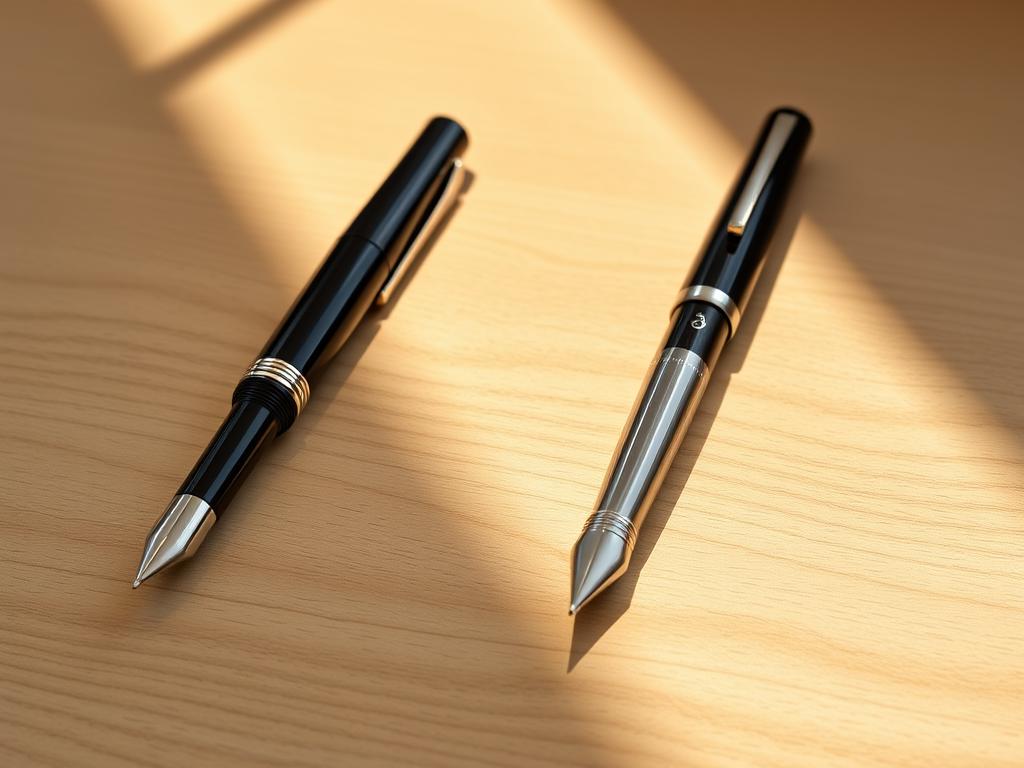For decades, fountain pen enthusiasts have debated which brand delivers the perfect blend of style, performance, and value. While personal preference plays a role, understanding the nuances between these iconic brands can help writers and collectors make informed choices.
This comparison explores design philosophy, materials, and nib performance, two critical factors for anyone investing in a high-quality writing tool. Lamy’s modern, minimalist approach contrasts with Parker’s classic elegance, appealing to different tastes. Both brands prioritize durability, but their construction methods vary—Lamy often uses lightweight plastics, while Parker leans toward lacquered metals.
User feedback highlights how ergonomics and ink flow impact daily writing experiences. Collectors also appreciate the historical significance of each brand, with Parker tracing its roots to the 19th century and Lamy emerging as a mid-century innovator.
Price points differ, too. While both offer accessible options, premium models from brands like Montblanc or Pelikan provide alternatives for those seeking luxury. Whether you prioritize smooth writing, aesthetics, or investment potential, this guide breaks down the essentials to match your needs.
Key Takeaways
- Design styles vary: Lamy favors modern minimalism, while Parker emphasizes timeless elegance.
- Nib performance and ink flow differ based on brand engineering.
- Material choices impact durability and writing comfort.
- Price ranges accommodate both casual users and serious collectors.
- Luxury alternatives like Montblanc or Graf von Faber Castell cater to niche preferences.
- Personal writing habits and aesthetic tastes should guide final decisions.
Overview of Lamy vs Parker
Selecting the ideal fountain pen often leads enthusiasts to a crossroads between innovation and tradition. These writing tools blend craftsmanship with functionality, appealing to both newcomers and seasoned collectors. While modern brands push boundaries, heritage labels preserve timeless techniques, creating a vibrant market.
Introduction to Fountain Pens and Comparison Context
Fountain pens have evolved from 19th-century dip pens into symbols of personal expression. Early models required frequent ink dipping, but self-filling mechanisms revolutionized writing by the 1920s. Today, they attract users seeking smoother alternatives to ballpoints and rollerball pens.
Brands like Parker emerged during this golden age, prioritizing sleek designs and reliable nibs. Others, including German-engineered names, later introduced ergonomic grips and modular systems. Collectors often seek pens reflecting historical milestones or artistic innovation.
Importance of Choosing the Right Pen
Choosing between top brands involves balancing four key elements:
| Factor | Description | Impact |
|---|---|---|
| Design | Modern minimalism vs vintage elegance | Matches personal style |
| Nib Performance | Ink flow consistency & scratch resistance | Affects writing comfort |
| Materials | Plastic, metal, or resin construction | Determines durability |
| Maintenance | Ease of disassembly for cleaning | Simplifies long-term care |
Maintenance also plays a role—models with simpler disassembly make fountain pen cleaning easier. While this comparison focuses on two leaders, Japanese makers like Nakaya and Namiki compete with hand-painted finishes and gold nibs.
Ultimately, the best fountain pens align with how someone writes and what they value. Professionals might prioritize sleek profiles, while artists could favor ink flow control. Testing different nib sizes and weights helps narrow options.
Design and Build Quality
A pen’s design directly shapes its usability and emotional connection with the writer. Modern brands prioritize bold innovation, while heritage labels refine timeless silhouettes. This contrast defines the two approaches examined here.
![]()
Lamy Designs: From the Safari Entry to the 2000 Model
The Safari model redefined entry-level pens with its unapologetically modern look. Its triangular grip guides fingers naturally, reducing hand fatigue during long sessions. The ABS plastic body resists cracks, and the ink window lets users track levels effortlessly.
Upgrading to the flagship 2000 model, the brand shifts to brushed stainless steel and minimalist lines. A retractable clip and piston-filling system reflect Bauhaus-inspired functionality. Like Pelikan’s Souverän series, it balances sleekness with ruggedness for daily use.
Parker’s Elegant and Vintage Appeal
Classic cigar-shaped profiles and gold-plated accents define this brand’s identity. Models like the Sonnet feature lacquered finishes reminiscent of luxury rollerball pens. Metal construction ensures weightiness, appealing to those who favor tradition over trend.
Collectors often compare these designs to Montblanc’s Meisterstück—both emphasize heritage through polished details. The streamlined silhouette fits seamlessly into professional settings, much like premium ballpoint pens from Cross or Waterman.
Performance and Writing Experience
The true test of a fountain pen lies in its daily performance—how effortlessly it glides across paper and adapts to your hand. Let’s explore what sets these writing instruments apart when ink meets page.
Nib Engineering: Precision Meets Personality
German-engineered stainless steel nibs deliver a buttery glide favored by quick note-takers. These durable tips resist corrosion and maintain consistent ink flow, even after years of use. One flagship model features a spring-loaded design that adjusts to writing pressure—perfect for expressive signatures.
In contrast, fine nib configurations from heritage brands prioritize precise feedback. Their gold-plated tips, often crafted in Japan, excel at detailed script work. Users report fewer skips on textured paper, making them ideal for artists or journalers.
| Feature | Stainless Steel Nib | Fine Gold Nib |
|---|---|---|
| Smoothness | High | Moderate |
| Durability | Excellent | Good |
| Ink Flow | Generous | Controlled |
| Best For | Fast Writers | Detailed Work |
Filling Systems Simplified
Piston mechanisms in premium models hold 30% more ink than cartridge converters. This means fewer refills during marathon writing sessions. One user noted:
“My daily driver’s piston filler hasn’t leaked once in three years—just smooth twists and consistent flow.”
Cartridge systems offer swap-and-go convenience. Pair them with bottled ink using a converter for eco-friendly flexibility. Pro tip: Flush the grip section monthly with lukewarm water to prevent clogs.
Weight distribution matters too. A well-balanced pen with a textured grip section reduces hand strain. Try holding different models sideways—the one that stays level usually feels best during long edits.
Comprehensive Analysis: lamy vs parker
Choosing between these iconic brands depends on how their technical specs align with your writing habits. Let’s dissect critical features to reveal which pen might become your daily companion.
Feature-by-Feature Comparison
Nib versatility sets the German brand apart, offering 14 options from extra-fine to broad. Their proprietary LZ50SL nib, popular in limited edition releases, supports quick swaps for left-handed writers. The heritage manufacturer focuses on consistency, providing three standardized nib sizes optimized for quick notes.
| Feature | Brand A | Brand B |
|---|---|---|
| Nib Options | 14 sizes | 3 sizes |
| Grip Design | Textured triangular | Polished cylindrical |
| Weight | 22g (balanced) | 28g (front-heavy) |
| Ink Capacity | 1.35ml piston | 0.9ml cartridge |
| Collectibility | Annual limited editions | Anniversary models |
User-Centric Insights on Ergonomics and Reliability
Long-term users praise the German model’s grip for reducing fatigue during marathon sessions. One reviewer noted:
“The textured section stays secure even when my hands get sweaty—crucial for conference calls.”
The heritage brand’s metal body appeals to those valuing heft, though some find it slippery. Both score highly in pen design durability tests, surviving drops better than many luxury pens.
For collectors, limited edition launches drive 30% higher resale value compared to standard models. However, both brands trail behind Japanese makers in nib customization—a key factor for those prioritizing pen cleaning ease and ink flow control.
Value for Money and Pricing Considerations
Smart shoppers balance upfront costs against lasting satisfaction when choosing premium writing tools. While entry-level options start under $30, discerning buyers weigh build quality, included extras, and resale potential.
What’s in the Box Matters
Many mid-range pens include bonus items that enhance value. Converters for bottled ink often come standard with classic models, while modern counterparts may require separate purchases. Entry-level ABS plastic designs keep costs low but still feature pen clipped security for pockets or notebooks.
| Model Type | Avg. Retail Price | Included Accessories |
|---|---|---|
| Entry-Level | $25-$50 | 1 ink cartridge, basic converter |
| Mid-Range | $80-$150 | Premium converter, gift box |
| Collector Edition | $250+ | Numbered case, italic nib option |
When Pens Become Assets
Limited editions with unique finishes or retractable fountain mechanisms often appreciate 20-40% within five years. One auction report showed a 2015 special edition selling for triple its original price. As one collector noted:
“Rare color variants outperform traditional investments—if you can snag them before they sell out.”
- Everyday users benefit from durable pens use materials like brushed steel
- Artisans prefer models compatible with pen pencil sets for multitasking
- Best rollerball alternatives offer smoother writing at lower price points
For maximum flexibility, consider models supporting both cartridges and bottled ink. This dual system cuts long-term costs while accommodating favorite inks.
Exploring Other Premium Pen Brands
The luxury pen market offers a vibrant ecosystem of craftsmanship beyond popular favorites. Brands like Caran d’Ache and Montblanc redefine elegance, while Japanese artisans blend tradition with cutting-edge engineering.

Artistry Meets Innovation
Caran d’Ache stands out with Swiss precision, crafting fountain pens featuring vibrant lacquer finishes. Their 849 model doubles as a ballpoint pen and collectible art piece. Montblanc’s Meisterstück series remains a status symbol, using rare resin and platinum accents.
Namiki elevates writing tools with hand-painted maki-e designs. Each nib is tuned for ink flow consistency. Nakaya follows suit, offering bespoke urushi lacquer pens that age beautifully. Users praise their lightweight feel compared to metal-bodied alternatives.
Engineering Excellence Across Borders
Pilot’s Custom Heritage line delivers buttery-smooth pens with gold nibs under $300. Graf von Faber-Castell uses sustainable materials like ebony wood, appealing to eco-conscious buyers. S.T. Dupont’s lacquered finishes rival luxury watches, while Pelikan’s piston-filling system holds 50% more ink than standard converters.
| Brand | Specialty | Material | Price Range |
|---|---|---|---|
| Waterman | Refill Compatibility | Brass/Lacquer | $120-$400 |
| Aurora | Custom Nibs | Sterling Silver | $250-$1,200 |
| Montegrappa | Themed Designs | Sterling Silver | $500-$5,000 |
Cross and Tibaldi focus on ergonomics—their tapered grips reduce finger fatigue. Aurora pens accept popular ink refills like Pilot G2, a feature professionals appreciate. As one collector noted:
“My Montegrappa Copper Mule writes smoother than any German-engineered nib I’ve tried.”
Conclusion
In the realm of fine writing instruments, the journey from nib to paper reveals more than ink—it tells a story of personal choice. Modern design philosophies prioritize bold shapes and textured grip sections for all-day comfort, while classic profiles emphasize polished finishes and secure clip mechanisms. Material choices further divide preferences, with lightweight plastics sucing casual users and lacquered metals appealing to traditionalists.
Performance hinges on subtle details—the spring in a nib, the balance of a barrel, or the ink capacity of a filling system. Collectors often branch into premium brands like Montblanc or Graf von Faber-Castell for artisanal craftsmanship, though these come with steeper price tags.
Ultimately, your ideal pen should feel like an extension of your hand. Test different weights, nib widths, and section shapes before committing. Share your experiences below—what design elements or grip styles elevate your writing? Let’s keep the conversation flowing!
FAQ
How do Lamy and Parker pens differ in build quality?
Lamy often uses modern materials like ABS plastic and stainless steel, prioritizing durability and ergonomics. Parker leans toward polished metals and vintage-inspired designs, blending elegance with classic craftsmanship. Both brands focus on reliable construction but cater to distinct aesthetic preferences.
Which brand offers better nib performance for everyday writing?
Lamy’s nibs are known for smooth, consistent ink flow and interchangeable options, ideal for customization. Parker’s nibs emphasize refined precision, often preferred for formal writing. The choice depends on whether users prioritize versatility or a polished, traditional feel.
Are Parker pens more expensive than Lamy models?
Parker’s premium lines, like the Sonnet or Duofold, often cost more than entry-level Lamy pens. However, Lamy’s flagship models, such as the 2000, compete closely in price. Budget-conscious shoppers might prefer Lamy’s Safari, while collectors may invest in Parker’s limited editions.
What maintenance tips apply to both brands’ fountain pens?
Regular cleaning with lukewarm water prevents ink clogs. Avoid harsh chemicals on nibs or feeds. For pens with converters, flush the mechanism monthly. Storing them horizontally ensures consistent ink flow, especially for models like the Lamy Safari or Parker Jotter.
Do these brands offer retractable or specialty nib options?
Lamy provides italic and broad nibs for creative writing, while Parker focuses on fine and medium sizes for versatility. Neither brand currently offers retractable fountain pens, but both include secure clip designs for portability.
Which brand is better for users with larger hands?
Lamy’s triangular grip section, seen in the Safari, aids comfort during long sessions. Parker’s slimmer profiles, like the IM series, suit those preferring lightweight pens. Testing both ergonomic styles helps determine the best fit for hand size and writing posture.
Are Parker pens more collectible than Lamy’s offerings?
Parker’s heritage models, such as vintage Duofolds, hold significant collector value. Lamy’s limited editions, like the AL-Star special releases, attract modern enthusiasts. Collectibility often depends on design rarity and historical significance within the pen community.
How do filling mechanisms compare between the two brands?
Lamy frequently uses proprietary cartridge-converter systems, praised for simplicity. Parker incorporates piston fillers in premium models, offering higher ink capacity. Both brands ensure reliable mechanisms, though refill preferences may sway users toward one over the other.
What alternative brands compete with Lamy and Parker?
Montblanc and Pelikan rival Parker in luxury appeal, while Pilot and Faber Castell challenge Lamy’s modernist approach. Waterman and Cross provide mid-range options with balanced performance, appealing to those seeking alternatives to both German and British designs.


